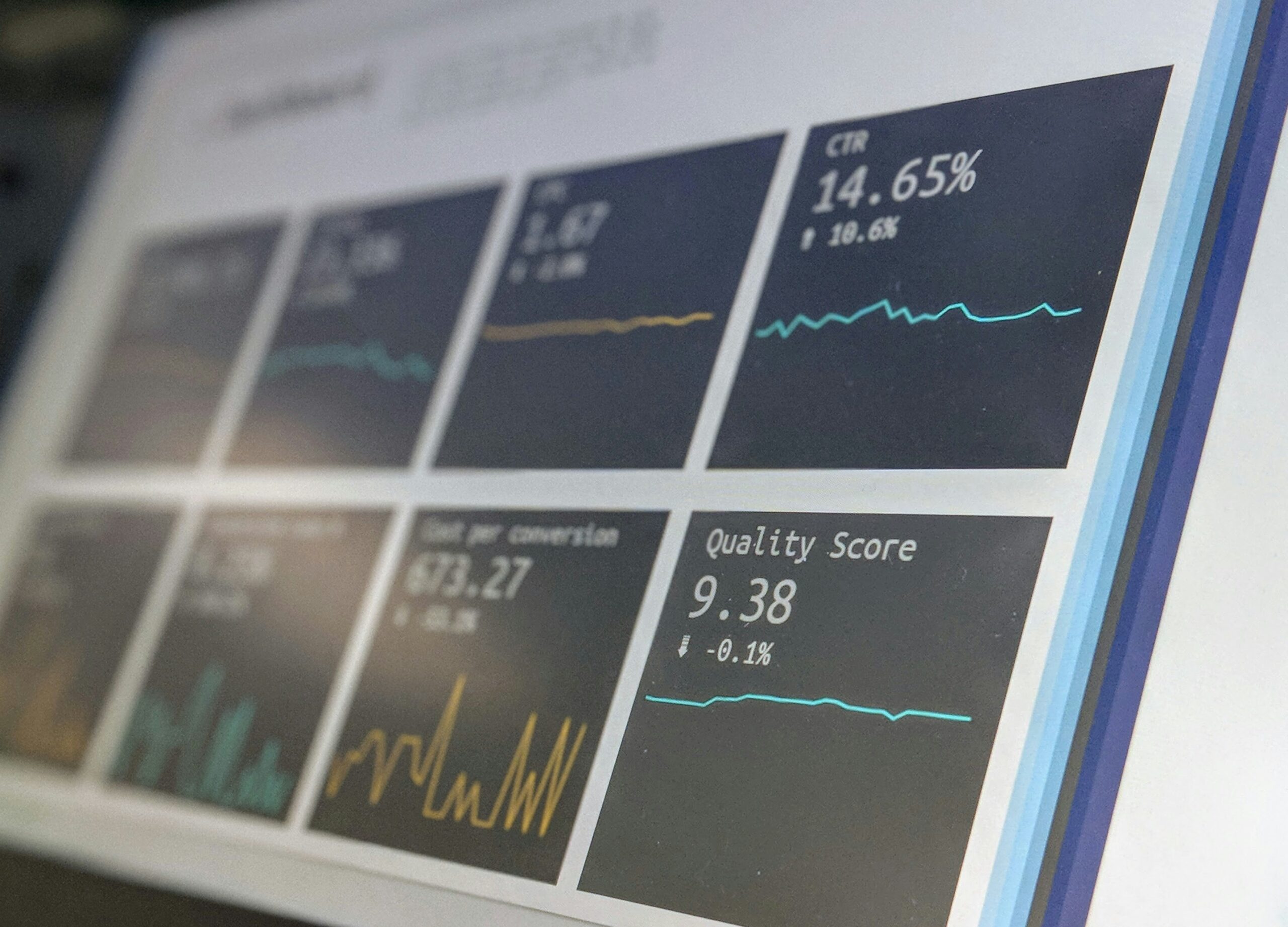
Introduction to Eco-Friendly Packaging
Eco-friendly packaging refers to the use of materials and methods in packaging that have a minimal impact on the environment. This concept is gaining traction across various industries, particularly among tech companies that are increasingly aware of their environmental footprint. With growing concerns about climate change and pollution, businesses are re-evaluating their packaging strategies to adopt sustainable practices that resonate with environmentally conscious consumers.
Traditional packaging materials, especially plastics, have been a significant cause of environmental degradation. The production and disposal processes associated with plastic packaging contribute to high levels of carbon emissions, as well as pollution in oceans and landfills. In stark contrast to conventional materials, eco-friendly packaging solutions are designed to reduce waste, minimize carbon footprints, and promote recyclability. These materials often include biodegradable options, compostable substances, and recyclable alternatives, which help mitigate environmental impact.
The importance of sustainable packaging in the tech industry cannot be overstated. As consumer awareness of environmental issues continues to rise, tech companies that offer eco-friendly packaging solutions stand to gain a competitive edge. Adopting sustainable packaging is not merely an operational change; it reflects a company’s commitment to long-term ecological responsibility. Moreover, it fosters brand loyalty among consumers who prioritize sustainability and are more likely to support brands that align with their values.
As tech companies strive to innovate in their products, they must also innovate in their packaging strategies. Embracing eco-friendly packaging solutions can lead to substantial reductions in environmental impacts, while also enhancing brand image and customer satisfaction. This progressive movement towards sustainability is a critical trend that tech companies cannot afford to overlook.
Why Tech Companies Should Care About Sustainability
In today’s rapidly evolving marketplace, tech companies must prioritize sustainability to align with consumer expectations and regulatory requirements. A growing number of consumers are becoming increasingly conscious of their purchasing decisions, favoring brands that prioritize eco-friendly practices. According to recent surveys, approximately 70% of consumers are willing to pay a premium for products packaged sustainably. This shift in consumer behavior highlights the importance of adopting eco-friendly packaging solutions for tech companies, which can lead to increased sales and customer loyalty.
In addition to consumer demand, tech companies face rising regulatory pressures aimed at reducing environmental impacts. Governments globally are implementing stringent regulations on packaging waste, driving companies to rethink their packaging strategies. By embracing eco-friendly packaging solutions, tech companies can not only comply with these regulations but also position themselves as leaders in sustainability. This proactive approach can bolster their reputation and attract environmentally conscious consumers who seek responsible brands.
Furthermore, adopting sustainable packaging can yield significant cost savings in the long run. While the initial investment in eco-friendly materials might be higher, companies often find that sustainable practices streamline operations. This may include reducing material waste, lowering shipping costs through lighter packaging, and minimizing the need for compliance-related expenditures. Consequently, tech companies can enhance their operational efficiency, leading to improved profit margins. Additionally, the appeal of sustainability can enhance brand reputation, distinguishing companies from their competitors. By marketing their commitment to eco-friendly packaging solutions, tech companies can strengthen their brand image and build a loyal customer base.
In conclusion, the landscape of consumer preferences and regulatory frameworks necessitates that tech companies recognize the importance of sustainability. By integrating eco-friendly packaging solutions into their business models, they can not only meet customer expectations and regulatory demands but also enjoy the benefits of cost savings and enhanced brand reputation.
Materials Used in Eco-Friendly Packaging
As the demand for sustainable practices increases, tech companies are exploring various materials that facilitate eco-friendly packaging solutions. The right material can significantly impact both environmental footprint and consumer perception. Here, we will review some of the most notable options.
One of the most commonly discussed materials is biodegradable plastics, which can break down in natural conditions. These plastics are often produced from renewable resources, such as corn starch or sugarcane. The key advantage of biodegradable plastics lies in their ability to decompose, reducing landfill waste. However, their production process can still have a substantial environmental impact, particularly in terms of land use and resource consumption. Moreover, improper disposal can hinder decomposition, making them less effective than anticipated.
Recycled cardboard is another popular choice among tech companies looking for eco-friendly packaging solutions. Made from post-consumer waste, recycled cardboard minimizes the need for new raw materials and significantly lowers emissions associated with traditional cardboard production. The primary downside of recycled cardboard is its susceptibility to moisture, which may limit its usefulness for products that require additional protection during shipping.
Innovative alternatives, such as mycelium and seaweed-based packaging, are garnering attention for their potential benefits. Mycelium, which is derived from mushrooms, is a highly compostable material that is both lightweight and strong. Seaweed-based packaging, on the other hand, is biodegradable and requires minimal resources to produce. While these options present exciting opportunities for sustainable packaging, they are still in the early stages of adoption and may not yet be cost-effective for large-scale use.
Ultimately, selecting the appropriate materials for eco-friendly packaging solutions for tech companies involves weighing the pros and cons of each option, considering factors such as functionality, sustainability, and cost.
Case Studies of Tech Companies Leading the Way
As the demand for sustainable practices grows, many tech companies are taking initiative by implementing eco-friendly packaging solutions. This section examines various case studies ranging from industry giants to innovative startups that have made meaningful strides in reducing their environmental footprint through packaging.
One noteworthy example is Apple, which has committed to eliminating plastic from its packaging by 2025. The tech company has transitioned to using recycled paper and plant-based materials for its product packaging, significantly reducing waste and promoting sustainable sources. By redesigning its packaging processes to be more eco-friendly, Apple has set a benchmark for the industry and inspired other tech companies to adopt similar strategies.
On a smaller scale, the startup Gomi has emerged as a pioneer in eco-friendly packaging solutions for tech companies. This innovative company produces biodegradable packaging made from recycled ocean plastics. Gomi’s unique approach not only aligns with the push for sustainability but also raises awareness about the plastic crisis. Their model demonstrates how even small players in the tech sector can contribute significantly to reducing environmental impact through responsible packaging.
Another prominent player, Dell Technologies, has made significant advances in its commitment to sustainable packaging. The company uses mushroom-based materials and other biodegradable resources to package their products. Dell also encourages customers to return used packaging materials for recycling, thereby promoting a circular economy model. This initiative is an excellent example of how larger corporations can leverage their scale to implement effective eco-friendly packaging solutions.
In conclusion, the case studies presented illustrate a diverse range of strategies adopted by tech companies in their pursuit of eco-friendly packaging solutions. By learning from these successful initiatives, other organizations can be inspired to rethink their packaging strategies and work towards a more sustainable future.
Challenges in Transitioning to Eco-Friendly Packaging
The shift towards eco-friendly packaging solutions for tech companies can be fraught with challenges that may impede progress. One of the primary barriers is often related to the supply chain. Many tech companies rely on established networks for sourcing traditional packaging materials, which may not easily accommodate new, sustainable alternatives. This can lead to delays in product launches and increase complexities in logistics as companies attempt to integrate biodegradable or recyclable materials into their existing packaging lines.
Cost implications present another significant challenge. Eco-friendly packaging solutions typically have higher upfront costs compared to conventional packaging. This can deter companies from making the transition, particularly when they are focused on maintaining profit margins in a competitive tech market. However, it is crucial to recognize that while the initial investment may be higher, the long-term benefits, such as reduced waste disposal fees, improved brand image, and increased customer loyalty, can outweigh these initial costs.
Moreover, compliance with various industry standards and regulations poses an additional layer of complexity. Tech companies must ensure that their new packaging meets not only environmental regulations but also safety and durability standards. This necessitates thorough research and development, testing, and potentially, the formation of new partnerships with suppliers who specialize in sustainable materials. To successfully navigate these challenges, tech companies can adopt a phased approach to transitioning, starting with pilot programs to test eco-friendly packaging solutions on a smaller scale before broader implementation. Engaging in educational initiatives and collaborations with industry stakeholders can also help streamline the transition, allowing for knowledge exchange and resources sharing.
In conclusion, while transitioning to eco-friendly packaging solutions for tech companies presents several challenges, strategic planning and collaboration can facilitate a smoother transformation towards more sustainable practices.
Innovative Packaging Designs and Solutions
In the pursuit of sustainable practices, tech companies are turning to innovative packaging designs that not only meet environmental standards but also enhance user experience. One prominent trend is the adoption of minimalistic packaging approaches. By simplifying packaging materials and eliminating unnecessary components, companies can reduce waste while still delivering their products securely. This strategy not only minimizes the environmental footprint but also resonates with consumers who appreciate straightforward and clutter-free solutions.
Another creative avenue is the implementation of clever space-saving designs. These innovative packaging solutions maximize space efficiency during transport and storage, which directly correlates to lower carbon emissions from shipping. For instance, tech companies are experimenting with collapsible and modular packaging systems that allow for easier stacking and transportation. This not only streamlines the supply chain but also reduces the overall volume of materials needed for packing, aligning perfectly with eco-friendly packaging solutions for tech companies.
Moreover, the development of reusable packaging systems is gaining traction as tech firms recognize the potential long-term benefits. Instead of single-use packaging, companies can invest in durable packaging that can be returned, cleaned, and reused. This not only lessens the reliance on virgin materials but also promotes a circular economy where products are continuously repurposed. Such initiatives reflect a shift towards greater sustainability in the tech sector, where packaging not only serves its primary purpose but also contributes positively to environmental commitments.
As the landscape of eco-friendly packaging solutions for tech companies evolves, embracing these innovative designs presents an opportunity to stand out in a competitive market. The focus on aesthetics, functionality, and sustainability ensures that brands can enhance the user experience while adhering to their environmental responsibilities. This dual approach lays a foundational strategy for tech companies looking to bolster their commitment to ecological preservation through smart packaging choices.
Regulatory Requirements and Standards
In the realm of eco-friendly packaging solutions for tech companies, compliance with regulatory requirements is paramount. Various governments and international organizations have established laws and standards to minimize environmental impacts resulting from packaging waste. These regulations not only aim to foster sustainable practices but also promote the use of innovative materials that reduce the overall carbon footprint of the tech industry.
For instance, the European Union’s Packaging and Packaging Waste Directive sets forth specific guidelines concerning the recyclability of packaging materials and mandates that manufacturers ensure their packaging meets certain environmental standards. Additionally, the Extended Producer Responsibility (EPR) policies require tech companies to take responsibility for the entire lifecycle of their packaging, including end-of-life management. This means businesses are incentivized to adopt eco-friendly packaging solutions that are easier to recycle or compost.
Moreover, countries like Canada and Australia have also introduced stringent regulations regarding single-use plastics and non-biodegradable materials in packaging, reflecting a global trend toward more sustainable practices. These laws necessitate that tech companies consider alternative materials that are biodegradable or made from recycled sources. Compliance with these regulations not only helps companies avoid potential fines but also positions them as responsible corporate citizens committed to the environment.
International standards such as ISO 14001 provide a framework for companies aiming to establish an effective environmental management system (EMS). This encourages businesses to continuously improve their environmental performance, which includes the sourcing and utilization of eco-friendly packaging solutions. By staying abreast of these regulations and understanding their implications, tech companies can develop packaging strategies that align with both compliance requirements and consumer expectations for sustainability.
Measuring the Impact of Eco-Friendly Packaging
With the growing emphasis on sustainability, tech companies are increasingly turning to eco-friendly packaging solutions. However, evaluating the effectiveness of these solutions is crucial to ensure that they deliver the desired environmental benefits, cost-effectiveness, and customer satisfaction. One effective way to measure the impact of eco-friendly packaging is through the assessment of life cycle analysis (LCA). This method examines the environmental impact of packaging materials from production to disposal, allowing companies to identify areas for improvement and track progress over time.
In addition to LCA, tracking waste reduction is another essential metric. Companies can measure the volume of packaging waste generated before and after adopting eco-friendly alternatives. A reduction in waste not only signifies improved environmental performance but also often correlates with cost efficiency, as less waste typically leads to lower disposal costs. By setting specific waste reduction goals, tech companies can better strategize and quantify the impact of their initiatives.
Customer satisfaction also plays an integral role in evaluating eco-friendly packaging solutions. Conducting surveys to gather feedback directly from consumers can provide valuable insights. Questions may focus on consumers’ perceptions of the sustainability efforts, the appeal of the packaging design, and their likelihood of repurchasing based on packaging practices. Monitoring product return rates can also highlight customer satisfaction; excessive returns may indicate that eco-friendly packaging choices are not meeting customer expectations of protection and usability.
Furthermore, companies should benchmark their performance against industry standards to gauge their relative success in implementing eco-friendly packaging solutions. This comparison can reveal best practices in the industry, guiding tech companies in refining their strategies. By meticulously measuring these factors, tech companies can effectively evaluate and enhance the impact of their eco-friendly packaging initiatives, leading to a more sustainable future while maintaining competitiveness in the marketplace.
Future Trends in Eco-Friendly Packaging for Tech Companies
The future of eco-friendly packaging solutions for tech companies looks promising as both technology and consumer expectations continue to evolve. Emerging technologies will likely play a significant role in the development of sustainable packaging materials. Innovations in biodegradable plastics, plant-based materials, and enhanced recycling processes are expected to shape the landscape of eco-friendly packaging. These advancements not only address environmental concerns but also offer tech companies the opportunity to differentiate themselves in a competitive market.
In parallel, evolving consumer expectations will drive demand for sustainable practices. Today’s consumers are more conscious about their environmental footprint and increasingly favor brands that utilize eco-friendly packaging solutions. This shift in consumer behavior suggests that tech companies must not only adopt sustainable packaging but also communicate their efforts effectively. Transparency about sourcing and manufacturing processes will become paramount, as consumers seek assurance that their purchasing decisions are making a positive impact.
Furthermore, regulatory changes may catalyze the transition toward more sustainable practices in the tech industry. Governments and regulatory bodies worldwide are implementing policies that encourage the reduction of plastic waste and promote sustainable material usage. Companies that adopt eco-friendly packaging solutions proactively may position themselves favorably in anticipation of these changes. Staying compliant while innovating in packaging will be essential as the landscape shifts.
To stay ahead of the curve, tech companies must invest in research and collaboration with material scientists and packaging experts. Embracing circular economy principles—where materials are reused, recycled, or composted—can lead to innovative solutions that minimize waste. By focusing on sustainability and consumer preferences, tech companies will be well-equipped to navigate the future of eco-friendly packaging and maintain a competitive edge.

